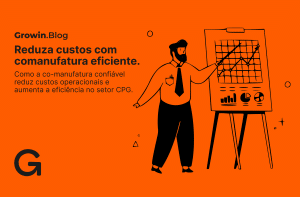Innovation is a double-edged sword in the consumer packaged goods industry. While it is a driving force behind growth and competitiveness, it also presents a unique paradox. This paradox stems from the need for CPG companies to balance innovation with the inherent challenges of the industry, such as regulatory constraints, consumer preferences, and supply chain complexities.
Let’s explore this topic, dissecting the challenges and opportunities it presents and how companies can navigate this delicate balance.
Understanding the Innovation Paradox
The CPG industry is one of the largest and most diverse sectors of the global economy, encompassing products ranging from food and beverages to personal care and household items. Innovation has been a cornerstone of success in this industry for decades. However, this innovation paradox arises from the tension between the following opposing forces:
1. Consumer Expectations vs. Product Stability: Consumers today demand constant innovation and variety in CPG products. They seek unique experiences, healthier choices, and sustainable options. At the same time, many CPG products, like staple foods and household essentials, are expected to remain stable and consistent over time. Striking the right balance between novelty and reliability can be challenging.
2. Regulation vs. Creativity: The CPG industry is heavily regulated, with strict standards for food safety, labeling, and advertising. These regulations are essential for consumer protection, but they can also stifle creativity and slow down product development. Navigating the regulatory landscape while innovating requires finesse and expertise.
3. Supply Chain Complexity vs. Speed-to-Market: CPG supply chains are intricate and multifaceted, often involving numerous suppliers, distributors, and retailers. Innovating in this environment can be slow and costly, making it challenging to bring new products to market quickly. Companies must find ways to streamline their supply chains while maintaining quality.
Challenges of the Innovation Paradox
- Regulatory Hurdles: CPG companies must contend with a web of regulations, from labeling requirements to nutritional guidelines. These regulations can create bottlenecks in product development and increase compliance costs. Navigating this complex regulatory landscape is a significant challenge.
- Consumer Skepticism: As consumers become more conscious of the ingredients and processes behind CPG products, they can become skeptical of claims made by brands. Building trust through transparency and authenticity is essential, but it requires time and effort.
- Supply Chain Disruptions: The COVID-19 pandemic exposed vulnerabilities in CPG supply chains. From sourcing raw materials to distribution, disruptions can derail innovation efforts and leave companies struggling to meet demand.
- Competitive Pressure: The CPG industry is highly competitive, with established giants and agile startups vying for market share. Staying ahead of the competition requires continuous innovation, but this can strain resources and budgets.
Opportunities within the Paradox
- Consumer-Centric Innovation: Instead of blindly chasing the latest trends, CPG companies can focus on consumer-centric innovation. Conducting thorough market research and listening to customer feedback can help identify genuine needs and preferences, leading to more targeted and successful innovation.
- Sustainability and Health: Addressing consumers’ growing concerns about health and the environment presents an opportunity for innovation. Brands can develop products that are healthier, use sustainable ingredients, and reduce their environmental footprint. Such initiatives not only align with consumer values but also differentiate brands in a crowded marketplace.
- Digital Transformation: Embracing digital technology can streamline operations, improve supply chain efficiency, and enhance the customer experience. From data analytics to e-commerce platforms, digital tools offer ways to innovate both internally and externally.
- Collaboration and Partnerships: To overcome supply chain challenges and expedite innovation, CPG companies can explore collaborations and partnerships. Working with suppliers, distributors, and even competitors can lead to shared resources, expertise, and faster product development cycles.
Navigating the Innovation Paradox
- Strategic Planning: CPG companies must adopt a holistic approach to innovation. This involves setting clear goals, aligning innovation efforts with overall business strategy, and establishing a structured process for ideation, development, and launch.
- Regulatory Expertise: Building a team or partnering with experts well-versed in regulatory requirements is crucial. This can help companies navigate the compliance landscape more efficiently and avoid costly setbacks.
- Agile Product Development: Adopting agile methodologies can help speed up product development cycles. Smaller, cross-functional teams can work collaboratively, making it easier to pivot in response to changing consumer preferences or market conditions.
- Investment in Sustainability: Sustainability is not just a buzzword; it’s a long-term strategy. Companies that invest in sustainable practices and products can not only meet consumer demands but also future-proof their businesses against growing environmental concerns.
- Transparency and Authenticity: Building trust with consumers requires transparency and authenticity. CPG companies should be open about their processes, ingredients, and sourcing practices, and they should strive to deliver on their promises consistently.
The Innovation Paradox is a complex challenge that requires a delicate balance between meeting consumer demands, navigating regulatory constraints, and managing supply chain complexities.
While it presents numerous challenges, it also offers significant opportunities for CPG companies. By adopting consumer-centric approaches, embracing sustainability, leveraging digital technology, and fostering collaboration, CPG brands can not only innovate effectively but also thrive in an industry where innovation is both a necessity and a paradox. In doing so, they can continue to meet the evolving needs and preferences of consumers while ensuring long-term success in a highly competitive marketplace.




